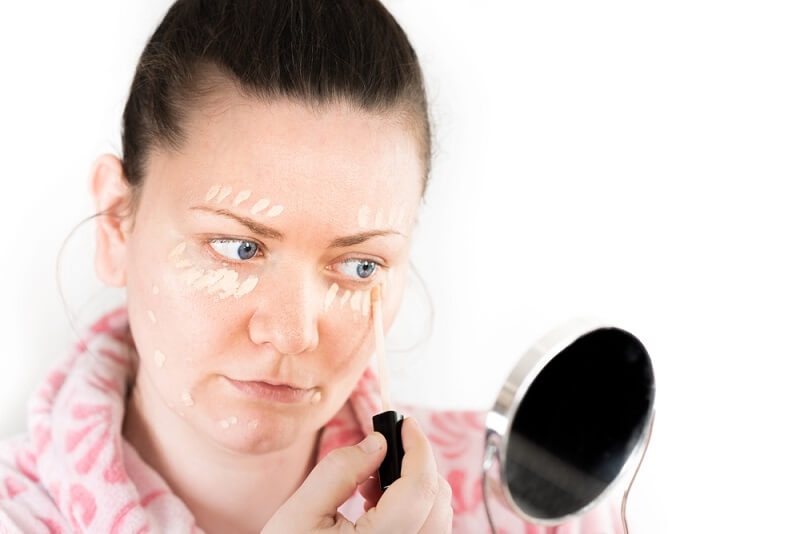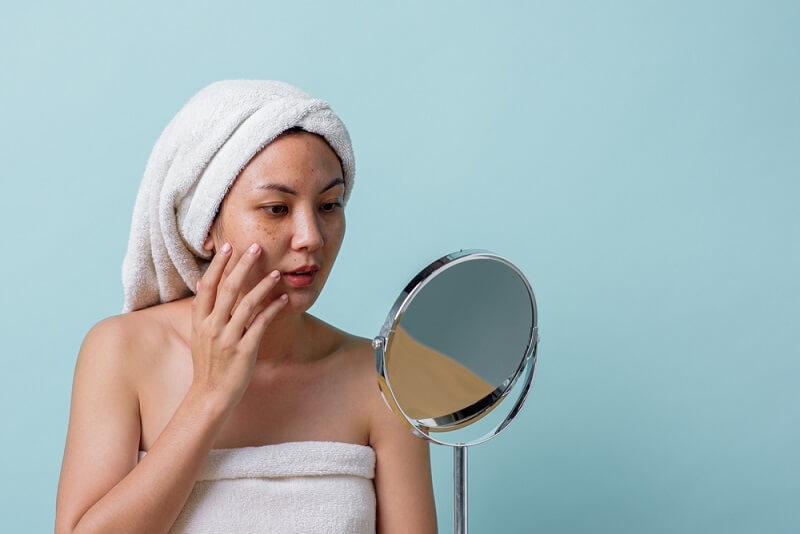Dark Spot Corrector for Clearer Skin and Lasting Confidence

Pursuing a bright, even complexion is a desired skincare goal for nearly everyone. However, for some of us, this journey is fraught with dark spots, hyperpigmentation, and general uneven skin tone that can sometimes feel like unapologetic glaring reminders of our imperfections. While they might be battle wounds from our past, these spots can feel like blemishes on our confidence; however, the good news is that solutions exist. Many products on the shelf promise the impossible, so the question remains: which dark spot corrector will give you real beauty results without costing you a fortune?
This guide simplifies pigmentation care, highlights affordable brightening product buys, and promotes an inclusive skincare approach for every skin type and tone. After all, we believe that everyone should be able to achieve a healthy glow. That’s why we wanted to craft this spot correction skincare guide that is realistic, affordable, and has realistic goals. Welcome to your journey to a brighter you!
What Exactly Are Dark Spots? The Science of Pigmentation
Before we discuss solutions, we need to understand the enemy. Dark spots, medically known as hyperpigmentation, are simply skin areas darker than the surrounding skin. This darkening or discoloration results from localized overproduction of melanin, the pigment responsible for skin color, hair, and eyes.
Melanin is produced by cells called melanocytes; your skin naturally produces it as a defense mechanism against UV radiation. However, a few different things can cause those cells to overproduce and deposit too much melanin, leading to noticeable excess pigmentation. Understanding your specific type of pigmentation is the first step in treating it effectively.
Common Culprits Behind Hyperpigmentation
- Sun exposure (sun spots): It is the most prevalent cause. Known as solar lentigines or liver spots, they are flat, brown, tan, or black spots that develop in areas where the skin sees the most sun exposure. Typically, these spots occur on the face, hands, and décolletage. The biggest culprit is consistent, unprotected sun exposure.
- Post-inflammatory hyperpigmentation (PIH): PIH occurs after the skin experiences inflammation or injury. It can arise from several causes, including acne breakouts, eczema, psoriasis, allergic reactions, aggressive cosmetic procedures, and more. Once the inflammation calms down, the skin is left with a dark mark.
- Melasma: Commonly referred to as the "mask of pregnancy," melasma occurs as bigger, symmetrical dark skin patches, usually on the cheeks, forehead, and upper lip. It is the result of hormonal changes (pregnancy, birth control pills) and exacerbated by sun exposure and heat.
- Other Factors: Age, predisposition, and medication can contribute to uneven skin tone.
Decoding the Ingredients: What to Look For in a Dark Spot Corrector
Not all skin brightening agents are equally effective. The best spot correction skincare products are designed with actives that scientifically interrupt the process of melanin production. Here are the powerhouse active ingredients you should look for on product labels.
The Gold Standards of Pigmentation Care
- Vitamin C (L-Ascorbic Acid): A well-known antioxidant that protects the skin from free radicals and inhibits the enzyme (tyrosinase) that creates melanin. Vitamin C brightens the complexion and overall radiance of the skin.
- Niacinamide (Vitamin B3): This incredibly versatile ingredient is gentle and effective. It prevents pigment from transferring to skin cells, is anti-inflammatory, reinforces the skin barrier, and is safe for almost all skin types and characteristics, making it a staple of inclusive skincare for pigmentation.
- Retinoids (retinol, retinaldehyde, prescription-strength tretinoin): Retinoids derived from vitamin A are cell communication agents that expedite cell turnover. This encourages the naturally pigmented, damaged surface cell layer to shed and reveal new, less pigmented skin underneath. They are some of the most validated actives for anti-aging and toning.
- Alpha Hydroxy Acids (AHAs): AHAs are chemical exfoliators like glycolic acid and lactic acid that work by dissolving the "glue" that holds dead skin cells together. They promote radiant, smooth skin while allowing for deeper penetration of other pigmentation care products. Chemical exfoliators also help to brighten the skin by dissolving and sloughing off the top pigmented layer.
- Kojic Acid & Azelaic Acid: These are other effective tyrosinase inhibitors derived from natural sources. They are often found in products designed for sensitive skin or those looking for alternatives to the more potent actives.
Building Your Routine: Affordable Brightening Product Strategies
An effective routine doesn’t require a dozen products. It requires strategic layering of key activities. Here’s how to build a simple yet powerful regimen focused on affordable glow products.
Morning Ritual: Protect and Prevent

Your AM routine is designed to protect your skin from new damage, which is rule number one in pigmentation management.
- Gentle Cleanser: Use a gentle, non-stripping cleanser to prepare the skin.
- Antioxidant Serum (Vitamin C): Next, apply a vitamin C serum. This will provide a layer of protection from environmental pollutants and free radicals generated from UV light and will also increase the protective effects of your sunscreen.
- Moisturizer: Apply a simple, non-comedogenic moisturizer to keep your skin hydrated and maintain a healthy barrier function.
- SUNSCREEN (NON-NEGOTIABLE): This is the most crucial step. Use a broad-spectrum SPF 30 or higher daily, rain or shine. Reapplying every two hours with direct sun exposure is key. This alone prevents existing spots from darkening and new ones from forming.
Evening Ritual: Treat and Correct
Nighttime is when your skin is in repair mode, so it's an ideal time to use your most active treatment products.
- Double Cleanse: First, use an oil-based cleanser to remove sunscreen and makeup, then follow with a water-based cleanser.
- Treatment Serum: Now, apply your specific dark spot corrector. Periodically rotate your actives; for example, you could use niacinamide (great for most nights), a gentle AHA (2-3 times a week), and retinol (1-2 days a week—max at first). Do not use your retinol and AHAs/BHAs on the same night.
- Moisturizer: Finish off with a nourishing moisturizer to seal everything in. If you're using potent actives, look for moisturizers with ceramides and peptides to support barrier health.
Finding the Best Affordable Brightening Product for You
"Affordable" is subjective, but generally means finding high-performance formulas without the luxury price tag. Many drugstore and mid-range brands now invest heavily in research, creating exceptional, affordable, brightening product lines that rival their expensive counterparts.
Don’t just look at the price tag when shopping for an affordable glow product. Look at the concentration of active ingredients (if disclosed), the packaging (airless pumps are best for vitamin C and retinol to prevent oxidation), and reviews from people with similar skin concerns and types. The best dark spot corrector for you is one that fits your budget so you can use it consistently over the long term.
The Heart of Inclusive Skincare for Pigmentation
Skincare solutions have not been created for all skin tones for too long! Inclusive skincare for pigmentation recognizes melanin-rich skin, its unique needs, and the increased risk of developing issues such as PIH. Inclusive skincare means:
- Formulation for Sensitivity: Understanding that darker skin tones are often more sensitive to harsh actives and may become more pigmented ironically from irritation.
- Visible on All Skin Tones: Brands show their products and results on various models and real people.
- Education: Clear, accessible education about ingredients and routines that are safe and effective for all ethnicities.
- Product access: Products that create a safe and effective glow are available to communities and are often ignored by the beauty industry.
True inclusion means everyone can find products that safely and effectively help them achieve their skincare goals.
Conclusion
Achieving a luminous, even skin tone is possible for everyone. You can see transformative results by understanding the causes of pigmentation and investing in a targeted dark spot corrector within a consistent routine. Remember, the cornerstone of success is daily sun protection paired with effective, affordable brightening products. Embrace an inclusive skincare approach for pigmentation to reveal your most radiant, confident skin. Your journey to real beauty results starts with a single, informed step.
This content was created by AI

